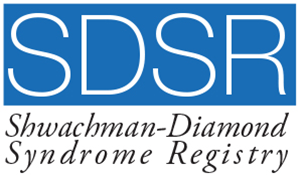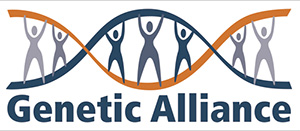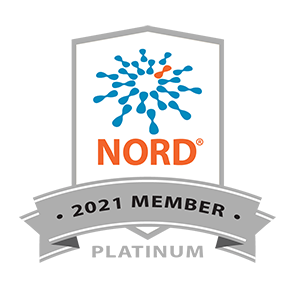SDS Topics
- Neutropenia
Adapted from NEUTROPENIA, Causes, Consequences, and Care, Provided by The Neutropenia Association Inc.1993
Neutropenia occurs when blood neutrophil counts are below 1500 per microliter. Some people are born with it like patients with SDS. It can happen after a viral infection. In some cases the cause can be a side effect of a drug, or exposure to certain poisons. People can get neutropenia when treated for cancer with chemotherapy drugs. Sometimes it happens for no known reason.
Blood is made up of billions of cells. There are many different types of blood cells, but most of the time you hear about two kinds – red cells and white cells. There are more red cells than any other type of blood cell. They are very important as they carry oxygen from your lungs to all parts of your body. White blood cells are just as important, but for a very different reason. One of their jobs is to protect you from infection. There are several kinds of white cells. Each has a special function. The most common ones are:
- Neutrophils surround and destroy bacteria in your body; these include polys and bands. They are the most numerous of the white blood cells. They make up about 56 percent of white blood cells.
- Lymphocytes are the key part of your body’s immune system, and defend against viruses.
- Basophils are indicators of allergic reactions to a variety of factors.
- Eosinophils rise above the normal range with allergic reactions and parasitic infections.
- Monocytes destroy the germ cells that have killed off by all of the other types of white cells.
The term neutropenia describes the situation where the number of neutrophils in the blood is too low. Neutrophils are very important in defending the body against bacterial infections, and therefore, a patient with too few neutrophils is more susceptible to bacterial infections. It is determined by calculating the Absolute Neutrophil Count.
Everyone has been sick with an infection at one time or another. That’s because it’s easy for bacteria and viruses that cause infections to get inside the body. Healthy people don’t often get infections even though bacteria and viruses are all around us, even in the air we breathe.
The body protects itself against the constant risk of infection by making a lot of neutrophils. They are your main defense against infections.
People with neutropenia get infections easily and often. Most of the infections occur in the lungs, mouth and throat, sinuses and skin. Painful mouth ulcers, gum infections, ear infections and periodontal disease are common. Severe, life-threatening infections may occur. Often the child or adult must be hospitalized and receive intravenous antibiotics. Your doctor uses blood tests to find out whether you have enough neutrophils.
The level of neutropenia may vary considerably. In general, the blood of healthy adults contains about 1500 to 7000 neutrophils per mm3 (1.5 – 7.0 x 109 /1). In children under 6 years of age the neutrophil count may be lower. The severity of neutropenia generally depends on the absolute neutrophil count (ANC) and is described as follows:
- Mild neutropenia, when the ANC falls below a lower limit of 1500 per mm3 (1.5 x 109 /1), but remains higher than 1000 per mm3 (1.0 x 109 /1).
- Moderate neutropenia, when the ANC falls between 500 per mm3 and 1000 per mm3 (0.5 x 109 /1 – 1.0 x 109 /1)
- Severe neutropenia, when the ANC falls below 500 per mm3 (0.5 x 109 /1)
For more information about Neutropenia, visit the following sites:
- Bone Marrow Biopsies
Excerpts taken from “A Guide to Understanding SDS” by Dr. Susan Burroughs with the review and approval by the SDSF Medical Advisory Board
Because this disease involves the bone marrow, it is important to monitor the blood and where it is manufactured (marrow) quite regularly. It has been suggested by many hematologists, including those on the SDSF Medical Advisory Board, that patients have a Complete Blood Count (CBC) every 3-4 months and that they have bone marrow biopsies/aspirates performed every 1 to 2 years.
Bone marrow tests indicate how well blood is being produced. A bone marrow biopsy involves removal of a very small piece of bone, usually from the pelvis in the back. It is useful for finding out the number of cells present in the bone marrow. The bone marrow aspirate involves removal of blood producing cells from the marrow. It is helpful in determining the types of cells in the marrow. Both samples are collected with study needles (similar in diameter to an ice pick) inserted through the skin into the bone. It can usually be an outpatient procedure and can be done under local anesthesia, sedating drugs or general anesthesia. The advantages and disadvantages of the different types of anesthesia can be discussed with your doctor before the test. A hematologist and or pathologist should evaluate the biopsy and aspirate to determine how well the bone marrow is producing blood cells and if a bone marrow failure state is present (aplastic anemia, myelodysplasia, leukemia). It is recommended that a bone marrow SDS transplantation specialist be involved in helping decide the most appropriate timing, methods and regimens to use as these differ from those recommended for other types of patients.
A test called cytogenetics can be performed on the bone marrow and this test looks at the chromosomes in the bone marrow. This test is useful on the initial bone marrow to determine if there are any existing abnormalities.
For more information about Bone Marrow Biopsies, visit the following sites:
- Pancreatic Functions
Information provided and written by Dr. Peter Durie, MD and Lynda Ellis, RN
Pancreatic Enzyme Supplements and Nutrition
SDS is not considered a nutritional disorder. While many children are underweight or malnourished at diagnosis, once the pancreatic insufficiency is addressed with pancreatic enzymes, the children usually begin to gain weight, height and gain better health. Therefore, it is not generally recommended that feeding tubes be used. Of course, every situation is different and only you and your doctors can figure this out for your family member. SDS patients are generally shorter than average.
Pancreatic Defect in SDS
The pancreas is an organ located just beyond the stomach. It produces a number of enzymes that are essential to digest or breakdown protein, fat, and carbohydrates. This allows the nutrients and the fat soluble vitamins (A, D,E,K) to be absorbed in the body. In reality, the pancreas has a very large reserve – only 2% of the pancreas is needed for normal digestion to occur. In people with SDS, the cells in the pancreas that make the enzymes are mostly absent – especially in infancy. Fortunately, about 50% of patients with SDS have a small improvement in pancreatic function, usually after age 4 and MAY be able to stop enzyme therapy. Recent research has suggested that when the pancreas improves for fat digestion, there may continue to be a problem with starch (complex carbohydrates) digestion. This may require a low dose of enzyme replacement to prevent symptoms such as bloating or abdominal cramps after a high starch meal.
Pancreatic Function Assessment
Pancreatic supplements should not be started until the pancreas has been assessed properly because some people with SDS do not need to use them. Tests such as the 72-hour fecal fat, serum typsinogen and iso-amylase, serum vitamin levels or stool for elastase are some of the indirect ways of assessing how the pancreas is working.
- Enzyme Therapy
When taken with meals and snacks, pancreatic enzymes will correct or partially correct the maldigestion problems in people whose pancreas does not work. Enzyme therapy also improves symptoms such as bloating and abdominal pain and leads to weight gain if a child is malnourished. Patients with SDS generally respond well to enzyme replacement therapy. The dose of enzymes needs to be adjusted according to the amount of food that is eaten and should be increased as children grow. Never increase the dose excessively without consulting your doctor. The use of extremely high doses has been associated with severe complications in patients with cystic fibrosis.
Enzymes are required for foods containing fat, protein and starch – for example milk, bread, meat. Enzymes are not required for foods that contain simple sugars alone – for example fruits, fruit juices, soft drinks, Jell-O, plain candies, popsicles, etc.
There are multiple commercial preparations, all of which come in different strengths. It is very important to recognize the strength of the preparation you/your child is taking. Examples of some of the preparations available in Canada and the USA are shown below. Some are available in capsules containing enzyme powder. Others are capsules containing micro tablets or beads of enzymes. The enteric coated products (ECS) have an outer coating that protects the enzyme from being destroyed by stomach acid.
Pancreatic Enzyme Product Lipase Content, units Creon 1203 3000 Creon 1206 6000 Creon 1212 12,000 Creon 1224 24,000 Zenpep EURAND 3 3000 Zenpep EURAND 5 5000 Zenpep EURAND 10 10,000 Zenpep EURAND 15 15,000 Zenpep EURAND 20 20,000 Zenpep EURAND 25 25,000 Pancreaze MT 4 4200 Pancreaze MT 10 10,500 Pancreaze MT 16 16,800 Pancrease MT 24 21,000 Ultresa 13800UL 13,800 Ultresa 20700UL 20,700 Ultresa 23000UL 23,000 Viokace 9111 10,440 Viokace 9116 20,880 Pertzye 8 8000 Pertzye 16 16,000 Samer Al-Kaade, MD. (2014).Table 1: Table 1. Lipase Content of Currently Available Pancreatic Enzyme Products: Selected years, 1982 through 2005. Retrieved from http://emedicine.medscape.com/article/2121028-treatment#a1156.
For more information regarding Enzyme Therapy, visit the following sites:
- Medscape: Exocrine Pancreatic Insufficiency Treatment & Management
- CF Health Matters: Enzyme Guidelines for Children with Cystic Fibrosis
- The Cystic Fibrosis Dieticians gives advice on enzyme information and guidelines which can aid SDS patients and their families as well. Although cystic fibrosis pancreatic insufficiency presents differently than SDS pancreatic insufficiency, the enzyme information is similar.
- Gene Information
Shwachman-Diamond Syndrome (SDS) is an autosomal recessive genetic disorder involving multiple organ systems and affecting children and young adults. With the recent identification of the SBDS gene – a novel, highly conserved gene encoding a protein of unknown function – investigations into SBDS function have constituted an active area of scientific research. SBDS has been suggested to function in ribosome biogenesis, adding to the recently growing body of evidence implicating ribosome dysfunction in marrow failure and cancer predisposition.
- Shwachman-Diamond Syndrome Gene Questions and Answers
With participation of SDS families from around the world, researchers from the Dr. Johanna Rommens and Dr. Peter Durie laboratories at The Hospital for Sick Children in Toronto have identified the altered gene that causes this disorder in December of 2002.
Does a genetic test for Shwachman-Diamond Syndrome (SDS) exist?
The gene that causes Shwachman-Diamond syndrome has been identified and a number of genetic mutations (mistakes in the gene) have been found in people who have this condition. A genetic test is now available and is available at many testing centers. Please refer to the “Diagnosis Information” section of the website for a list of the testing centers.(Additional information from the SDS Registry, which is not part of this original Q&A, states that “Genetic testing of siblings in families of patients with Shwachman-Diamond syndrome is important and necessary. A recent study through the North-American Shwachman-Diamond Syndrome Registry looking at initial symptoms at the time of diagnosis reports that as many as half of patients with SDS may first see a doctor without the classic symptoms of neutropenia, diarrhea or poor growth/failure to thrive. These results included some siblings of patients with Shwachman-Diamond syndrome who were otherwise without symptoms, and who were diagnosed with the SDS upon genetic testing. All siblings of patients with SDS should be tested, as timely diagnosis prior to the development of complications is critical for the best medical management and outcomes, particularly in the case of bone marrow failure, leukemia, or bone marrow transplantation. This is also especially important to ensure that affected siblings are not used as donors for bone marrow transplantation.”)
What is the difference between genetic testing in a research lab and a routine clinical test?
Research-based genetic testing is different from routine clinical tests. Research procedures are not approved nor standardized, and do not involve the same level of quality control that is required by regulatory authorities for commercial laboratories. The results of research-based tests include a disclaimer stating that the findings do not involve a standardized, approved test, and a caution that there may be errors in the test results.When will a test be available for my spouse to see if he/she is a carrier?
A genetic test for carrier status is available at the Molecular Genetics Laboratory at The Hospital for Sick Children, Toronto, Canada. Please contact info@shwachman-diamond.org for the current contact information.Can you test siblings to determine their carrier status?
Current knowledge suggests that people who carry a single SDS mutation do not have clinical symptoms.Is there more than one gene mutation?
To date, all SDS-associated mutations have been identified in one gene. There are a number of different mutations within this one gene. Two common alterations were found to account for 75% of all mutations in the initial group of families we have tested.What does identification of the SDS gene mean for the short-term?
In the short term, discovery of the SDS gene will lead to improved diagnosis of the disease since genetic tests are become available. In addition, collected clinical and genetic data can be used to determine if some mutations are associated with distinct SDS features.What is next for research?
The focus of research will now shift towards studying the gene that is altered in SDS. We need to learn more about this gene, its role in cells and tissues, how it works, and what goes wrong in SDS. This insight will be crucial to learn how mistakes in this gene lead to the clinical symptoms of SDS, including blood, bone and digestive problems. Ultimately, this may lead to development of new therapies for SDS. It is now widely accepted that SDS falls in the category of a ribosomal disease meaning that the ribosome is affected.Will finding the gene mean that there is a cure (gene therapy)?
Intense research efforts worldwide are focused at correcting genetic defects by gene therapy. However, there are numerous obstacles and safety concerns about introducing a corrected gene into human cells. We hope that breakthroughs in this field will make this an option for SDS patients in the future.Why must I go through my physician to receive this genetic information?
Issues arising from genetic test results can be very complex. Your physician can help explain the results and prepare you for the possible implications of having this information. Your doctor may also decide to refer you to a genetic counselor for additional consultation.Is genetic counseling important?
The purpose of genetic counseling is to answer questions you may have and also to prepare you to deal with the results of genetic testing. It is important that you fully consider the risks and benefits related to genetic testing. It may not provide you with clear and final answers regarding the health of your child or other family members and the results can be inconclusive. There are other potential risks of learning about gene alternations in your family that cannot be predicted. There may be unknown personal, legal and social consequences, and there may be implications for obtaining life and medical insurance.When will my doctor receive the results?
Genetics research is complex and time-consuming. There may not have any findings for a small percentage of patients. In some cases, this will be due to inadequate amounts of DNA. In these cases, you will be requested to send an additional blood sample in order to complete genetic testing. Families who fit into this category will be contacted to discuss further testing.Will I need to have my research results confirmed in a registered diagnostic facility?
Yes. This is particularly important if the genetic test results are to be used for genetic counseling, or if the clinical diagnosis is in doubt. This should be discussed with your doctor or a genetic counselor.If mutations are not identified, does this mean I don’t have SDS?
A diagnosis of SDS cannot be ruled out based on lack of genetic evidence. This is because some types of genetic mutations are rare and/or very difficult to detect. Genetic testing does not replace the need for careful investigation and monitoring of clinical symptoms, including pancreatic function and hematological problems.Thanks to these dedicated doctors and Fellows below who wrote and answered these important questions above.
- Graeme R.B. Boocock
- Lynda Ellis, R.N.
- Nicole Richards
- Jodi Morrison




